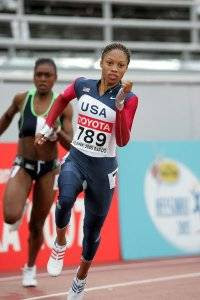So let's get into how to effectively introduce plyometric training in a way that will result in positive growth in the area of strength, power, coordination, body awareness and, of course, speed...
The underlying principle behind teaching plyos is simple. The concept is something that you've heard me preach over and over again:
Start with simple movements and progress to more complex movements ONLY when players have mastered the basic ones.
With my teams and groups, I let athletes 'graduate' to the next drill in our progression once they meet the criteria required for advancement.
In fact, players get pretty intense when it comes to 'graduation'. They all want to be the first to move on, but more importantly they don't want to be the last.
So using 'graduation' as a reward is a great way to get players to focus on the task at hand.
Remember, only do plyos on your speed days. They tax the same energy system as speed work and the weight room. So don't have your players do explosive plyos on your recovery days.
Here are the principles to follow when doing your plyos:
STEP 1: Start with basic stabilization exercises that begin and end using both feet.
Athletes must learn to control movements off of both feet before advancing to the more demanding drills.
Additionally, be sure to keep the number of ground contacts (total number of times the feet hit the ground) low until player learn to handle the increased load.
You can see the specific plyo progressions that we've found to generate the best results by getting your own copy of
Complete Speed Training.
***************
Step 2: Emphasize soft landings.
When doing plyos, players must learn to land softly. Cue them to absorb each landing with the muscles in the legs, not with joints, bones, ligaments, and tendons.
Each foot strike or impact should make a minimal amount of noise. Athletes can't graduate to the more 'fun' drills until they can learn to land softly.
If you cave in and let them graduate early, before they have acquired the necessary skills, then their ability to learn the new drills and avoid injury will be greatly reduced.
Here are some tell-tale signs that your players are not performing the drills correctly:
* Loud slapping sound with the feet upon landing
* Landing on the balls of the feet, with the weight forward and heels
off the ground
* Taking off with one foot instead of both feet
* Landing on one foot instead of both feet
* Inability to maintain/loss of balance upon landing
Once basic drills are mastered, and these common mistakes have been eliminated, players can start the bounding drills that people traditionally equate with
plyometric training.
*************
Step 3: Use medicine balls.
When athletes have a tough time with 'regular' plyos, I'll often back off and use medicine ball throws.
This will teach them many of the same explosive elements, but can be easier to master the movements. It also takes some of the pressure off of trying to succeed in the more difficult drills.
Of course, I use medicine ball throws for the more skilled football players as well. As always, make sure that the football players are doing the drills with perfect form.
The main flaw that I see with these drills is that athletes will throw the ball with their arms. The arms are a guide for the weight and shouldn't be the primary mover.
*******************
Plyometric workouts require a coach's close attention.
Hopefully I've given you some useful ideas on introducing these valuable exercises into your program. The temptation to skip the basic elements will be great, but I implore you to force your football players to be patient.
Get started today...




